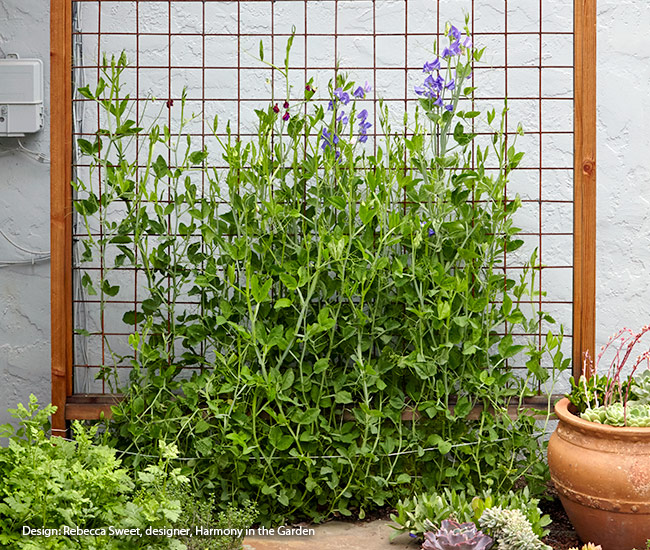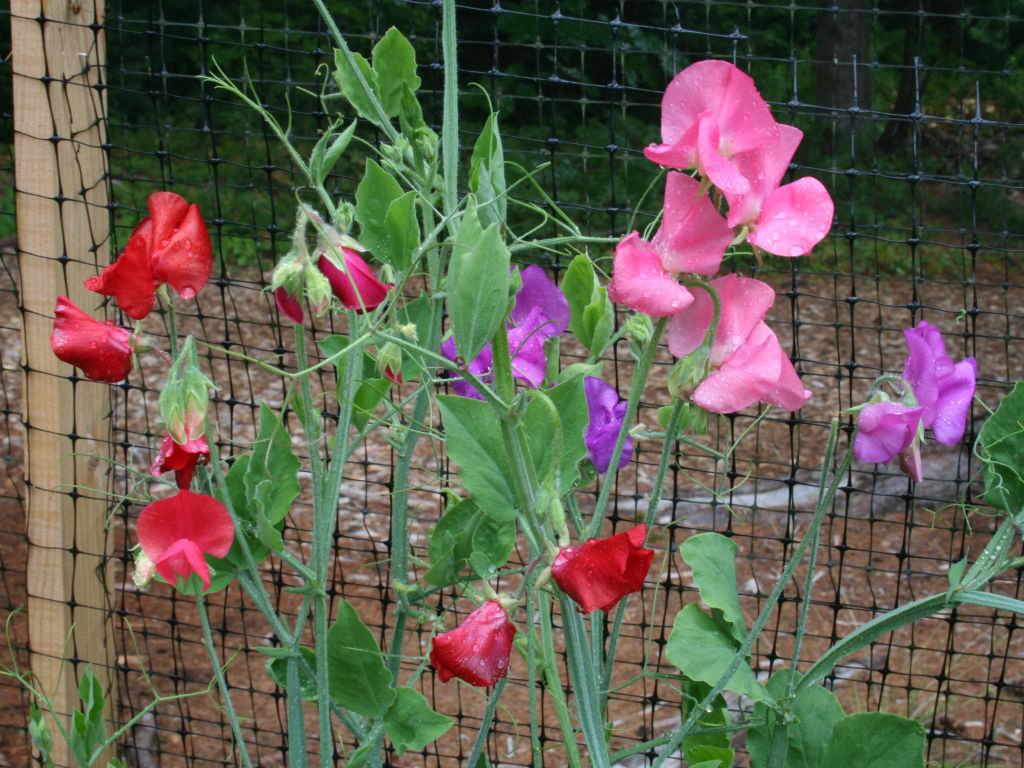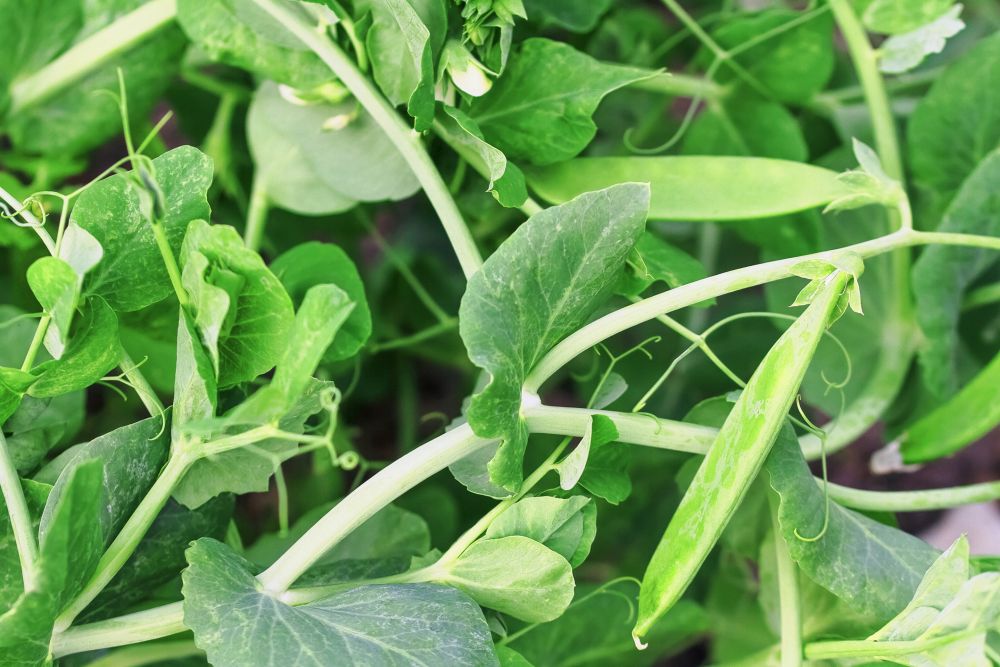Choosing the Perfect Sweet Pea Variety for Your Garden
Sweet peas are a popular and versatile flower that can add a touch of elegance and fragrance to any garden. With so many varieties to choose from, selecting the right one can be overwhelming. To ensure the best results, it’s essential to understand the different types of sweet peas and their characteristics. Heirloom sweet peas, for example, are known for their unique and complex fragrance, while hybrid varieties offer improved disease resistance and longer blooming periods. Fragrant sweet peas, as the name suggests, are renowned for their intense and sweet fragrance, making them a favorite among gardeners and florists alike.
When selecting a sweet pea variety, consider your garden’s climate and soil type. Some sweet peas thrive in cooler temperatures, while others prefer warmer weather. Similarly, some varieties prefer well-draining soil, while others can tolerate a range of soil conditions. By choosing a variety that is well-suited to your garden’s conditions, you can ensure optimal growth and blooming. For example, if you live in a cool and wet climate, consider planting a variety like ‘Cupani’s Original’ or ‘Royal Family’, which are known for their tolerance of cooler temperatures.
In addition to considering climate and soil type, think about the color and fragrance you want to achieve in your garden. Sweet peas come in a range of colors, including pastel shades, bold colors, and bi-colored varieties. Fragrance is also an essential consideration, as some sweet peas have a more intense fragrance than others. By choosing a variety that meets your needs and preferences, you can create a stunning and fragrant display in your garden.
Some popular sweet pea varieties for beginners include ‘Sugar Snap’, ‘Royal Family’, and ‘Cupani’s Original’. These varieties are known for their ease of growth, disease resistance, and high yields of fragrant flowers. For more experienced gardeners, consider trying a heirloom or fragrant variety, like ‘Matucana’ or ‘Painted Lady’, which offer unique and complex fragrances.
Ultimately, the key to success with sweet peas is to choose a variety that is well-suited to your garden’s conditions and meets your needs and preferences. By doing so, you can enjoy a bountiful harvest of fragrant and beautiful flowers that will add a touch of elegance to your garden.
Preparing the Soil for Sweet Pea Planting
Before planting sweet peas, it’s essential to prepare the soil to create the perfect growing conditions. Sweet peas prefer well-draining soil with a slightly acidic pH, ranging from 6.0 to 7.0. To achieve this, start by testing your soil type and pH level using a soil testing kit or by sending a sample to a laboratory for analysis.
Based on the test results, amend your soil as needed to create a well-draining and slightly acidic environment. Add organic matter such as compost or well-rotted manure to improve soil structure and fertility. If your soil is heavy clay or sandy, mix in some organic matter to improve its water-holding capacity and drainage.
In addition to amending the soil, consider adding a balanced fertilizer to promote healthy growth and blooming. A fertilizer with a ratio of 10-10-10 (nitrogen-phosphorus-potassium) is suitable for sweet peas. Apply the fertilizer according to the manufacturer’s instructions, taking care not to over-fertilize, which can damage the plants.
When preparing the soil for sweet pea planting, it’s also essential to remove any debris, weeds, or rocks that can compete with the plants for water and nutrients. Till the soil to a depth of about 12 inches to loosen and aerate it, making it easier for the sweet pea roots to grow.
By preparing the soil properly, you’ll be able to create an ideal environment for your sweet peas to thrive. This will help to promote healthy growth, encourage blooming, and increase the chances of a successful harvest. When it comes to how do you plant sweet peas, soil preparation is a critical step that should not be overlooked.
Some additional tips to keep in mind when preparing the soil for sweet peas include:
- Avoid planting sweet peas in areas with standing water or where water tends to collect.
- Don’t plant sweet peas in areas with poor air circulation, as this can lead to disease.
- Consider raised beds or containers if your soil is poorly draining or heavy clay.
By following these tips and preparing the soil properly, you’ll be well on your way to growing healthy and thriving sweet peas.
When to Plant Sweet Peas: Timing is Everything
When it comes to planting sweet peas, timing is crucial. The optimal time to plant sweet peas depends on your location and climate. In general, sweet peas thrive in cool weather and can be planted in early spring or late summer/early fall.
In temperate climates, the best time to plant sweet peas is in early spring, about 4-6 weeks before the last frost date. This allows the plants to get established before the heat of summer. In areas with mild winters, sweet peas can be planted in late summer or early fall, about 8-10 weeks before the first frost date.
Before planting, it’s essential to check the soil temperature. Sweet peas prefer a soil temperature of around 55-65°F (13-18°C). You can check the soil temperature by inserting a thermometer into the soil or by using an online soil temperature guide.
If you want to get a head start on the growing season, you can create a microclimate for early planting. This can be done by using row covers, cold frames, or hoop houses to protect the plants from frost and provide a warmer environment.
When planting sweet peas in the spring, make sure to wait until the soil has warmed up and the risk of frost has passed. In areas with heavy clay soil, it’s best to wait until the soil has dried out slightly before planting.
By planting sweet peas at the right time, you’ll be able to give them the best chance to thrive. This is especially important when it comes to how do you plant sweet peas, as proper timing can make all the difference in the success of your crop.
Some additional tips to keep in mind when planting sweet peas include:
- Check the weather forecast before planting and avoid planting during periods of extreme weather.
- Make sure the soil is moist but not waterlogged before planting.
- Plant sweet peas in a location that receives full sun to partial shade.
By following these tips and planting sweet peas at the right time, you’ll be able to enjoy a bountiful harvest of these beautiful and fragrant flowers.
How to Sow Sweet Pea Seeds: A Step-by-Step Process
Sowing sweet pea seeds is a straightforward process that requires attention to detail. To ensure the best results, follow these steps:
Step 1: Prepare the Seeds
Before sowing, make sure the seeds are fresh and of high quality. Check the seed packet for any specific instructions or recommendations for sowing. If the seeds are old or of poor quality, it may be best to purchase new seeds.
Step 2: Sow the Seeds
Sow the sweet pea seeds about 1-2 inches deep and 2-3 inches apart in well-draining soil. You can sow the seeds directly in the ground or in seed trays. If sowing in seed trays, make sure the soil is moist but not waterlogged.
Step 3: Water the Seeds
Water the seeds gently but thoroughly after sowing. Make sure the soil is consistently moist during the germination period, which can take anywhere from 7-14 days.
Step 4: Provide Support
As the seedlings grow, provide support for the plants using trellises, stakes, or cages. This will help the plants grow upright and encourage blooming.
Step 5: Thin the Seedlings
Once the seedlings have 2-3 sets of leaves, thin them out to about 6-8 inches apart. This will give the remaining seedlings room to grow and receive adequate air circulation.
By following these steps, you’ll be able to successfully sow sweet pea seeds and enjoy a bountiful harvest of these beautiful and fragrant flowers. When it comes to how do you plant sweet peas, proper sowing techniques are essential for optimal growth and blooming.
Some additional tips to keep in mind when sowing sweet pea seeds include:
- Use a seed starting mix specifically designed for sweet peas.
- Keep the soil consistently moist during the germination period.
- Provide adequate light for the seedlings, but avoid direct sunlight.
By following these tips and using proper sowing techniques, you’ll be able to enjoy a successful harvest of sweet peas.
Supporting Your Sweet Peas: The Importance of Trellises and Stakes
Sweet peas are climbing plants that require support to grow and thrive. Providing the right amount of support is crucial for optimal growth, blooming, and fruiting. In this section, we will discuss the importance of trellises and stakes for sweet peas and provide tips on how to use them effectively.
Why Support is Necessary
Sweet peas are natural climbers that use their tendrils to grasp onto nearby objects. Without support, they can become leggy and weak, leading to reduced blooming and fruiting. Additionally, unsupported sweet peas can become vulnerable to wind damage and disease.
Types of Support
There are several types of support that can be used for sweet peas, including trellises, stakes, and cages. Trellises are the most popular choice, as they provide a sturdy structure for the plants to climb. Stakes are also effective, but they can be more labor-intensive to install. Cages are another option, but they can be more expensive than trellises or stakes.
How to Provide Support
To provide support for your sweet peas, follow these steps:
1. Install the trellis or stake before planting the sweet peas. This will give the plants something to climb on as they grow.
2. Plant the sweet peas at the base of the trellis or stake. Make sure the soil is well-draining and fertile.
3. Train the sweet peas to climb the trellis or stake by gently twining the stems around the support.
4. Continue to provide support as the plants grow, adding more trellises or stakes as needed.
By providing the right amount of support, you can help your sweet peas grow and thrive. When it comes to how do you plant sweet peas, support is a critical factor that should not be overlooked.
Some additional tips to keep in mind when providing support for sweet peas include:
- Use a sturdy trellis or stake that can support the weight of the plants.
- Make sure the support is at least 6 feet tall to allow the plants to grow and climb.
- Train the sweet peas to climb the support by gently twining the stems around it.
By following these tips and providing the right amount of support, you can help your sweet peas grow and thrive.
Caring for Your Sweet Peas: Watering, Fertilizing, and Pruning
Once your sweet peas are planted and growing, it’s essential to provide them with the right care to ensure they thrive. In this section, we’ll discuss the ongoing care requirements for sweet peas, including watering, fertilizing, and pruning.
Watering
Sweet peas need consistent moisture, especially when they’re producing flowers. Water them deeply once or twice a week, depending on weather conditions. Avoid getting water on the leaves or flowers to prevent fungal diseases.
Fertilizing
Sweet peas are heavy feeders and benefit from regular fertilization. Use a balanced fertilizer (10-10-10) once a month, following the manufacturer’s instructions. You can also add a high-phosphorus fertilizer (10-20-10) to promote blooming.
Pruning
Pruning is essential to encourage bushy growth, promote blooming, and prevent the plants from becoming leggy. Remove any weak or spindly growth, and cut back the stems to about 6 inches from the ground after blooming.
Additional Tips
In addition to watering, fertilizing, and pruning, here are some additional tips to keep your sweet peas healthy and thriving:
- Keep the area around the plants weed-free to prevent competition for nutrients.
- Monitor the plants for pests and diseases, and take action promptly if you notice any issues.
- Provide support for the plants as they grow, using trellises or stakes to keep them upright.
By following these care tips, you’ll be able to keep your sweet peas healthy and thriving. When it comes to how do you plant sweet peas, proper care is essential for optimal growth and blooming.
Some additional tips to keep in mind when caring for sweet peas include:
- Keep the soil consistently moist, but not waterlogged.
- Avoid over-fertilizing, as this can damage the plants.
- Prune the plants regularly to encourage bushy growth and promote blooming.
By following these tips and providing the right care, you’ll be able to enjoy a bountiful harvest of sweet peas.
Common Problems and Pests: How to Keep Your Sweet Peas Healthy
Despite their beauty and fragrance, sweet peas can be susceptible to various problems and pests. In this section, we’ll discuss some common issues that can affect sweet peas and provide tips on how to identify and treat them.
Aphids
Aphids are small, soft-bodied insects that can infest sweet peas, causing curled or distorted leaves. To control aphids, use neem oil or insecticidal soap, and make sure to spray the undersides of the leaves where aphids tend to hide.
Slugs
Slugs can be a major problem for sweet peas, especially at night when they’re most active. To control slugs, use copper tape or crushed eggshells around the plants, and hand-pick any slugs you find.
Powdery Mildew
Powdery mildew is a fungal disease that can cause a white, powdery coating on sweet pea leaves. To control powdery mildew, use a fungicide specifically designed for sweet peas, and make sure to remove any infected leaves to prevent the disease from spreading.
Other Problems and Pests
In addition to aphids, slugs, and powdery mildew, sweet peas can be susceptible to other problems and pests, including:
- Root rot: caused by overwatering or poor drainage.
- Leaf spot: caused by fungal or bacterial infections.
- Caterpillars: can cause damage to leaves and flowers.
To keep your sweet peas healthy and thriving, it’s essential to monitor them regularly for signs of problems or pests. By catching issues early, you can take action to prevent them from spreading and causing damage to your plants.
Some additional tips to keep in mind when dealing with common problems and pests include:
- Use organic or integrated pest management (IPM) methods whenever possible.
- Avoid using chemical pesticides or fungicides, which can harm beneficial insects and the environment.
- Keep your garden clean and free of debris to prevent the spread of diseases and pests.
By following these tips and being proactive about monitoring your sweet peas for problems and pests, you can enjoy a healthy and thriving crop of these beautiful and fragrant flowers.
Enjoying Your Sweet Peas: Harvesting and Using Your Blooms
After months of care and attention, your sweet peas are finally in bloom. In this section, we’ll discuss how to harvest and use your sweet pea blooms, including tips on how to cut and arrange them in bouquets.
Harvesting Sweet Peas
Sweet peas are ready to harvest when the blooms are fully open and the stems are long enough to cut. Cut the stems at an angle, just above a node, to encourage the plant to produce more blooms. Make sure to harvest your sweet peas regularly to encourage the plant to continue producing flowers.
Using Sweet Peas in Bouquets
Sweet peas make a beautiful addition to bouquets and arrangements. To use your sweet peas in a bouquet, simply cut the stems to the desired length and arrange them in a vase or container with some greenery, such as eucalyptus or ferns. You can also add other flowers, such as roses or carnations, to create a unique and beautiful arrangement.
Other Ways to Enjoy Your Sweet Peas
In addition to using your sweet peas in bouquets, there are many other ways to enjoy them. Here are a few ideas:
- Use sweet peas in salads: Sweet peas can be used as a garnish or added to salads for a burst of color and flavor.
- Add sweet peas to potpourri: Sweet peas can be dried and added to potpourri blends for a fragrant and colorful mix.
- Use sweet peas in crafts: Sweet peas can be used in craft projects, such as making wreaths or other floral arrangements.
By enjoying your sweet peas in these ways, you can appreciate their beauty and fragrance all season long. When it comes to how do you plant sweet peas, the reward is well worth the effort.
Some additional tips to keep in mind when enjoying your sweet peas include:
- Make sure to harvest your sweet peas regularly to encourage the plant to continue producing flowers.
- Use a variety of sweet peas in your bouquets and arrangements to create a unique and interesting mix.
- Consider adding other flowers or greenery to your sweet pea arrangements to create a more complex and beautiful design.
By following these tips and enjoying your sweet peas in a variety of ways, you can appreciate their beauty and fragrance all season long.







